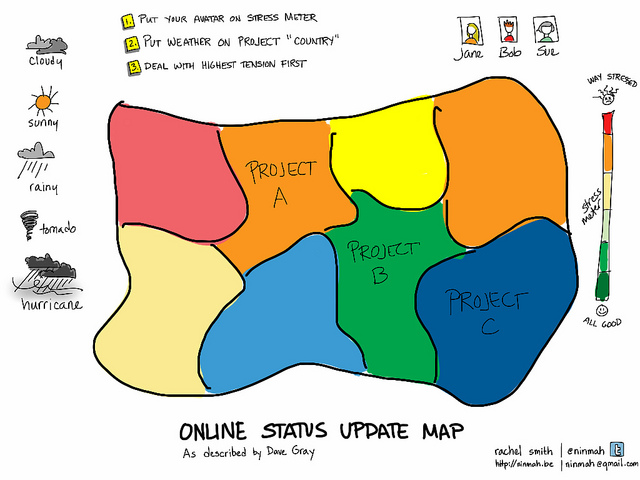Browsing Rachel Smith’s blog today I came across this terrific idea. She was building on an idea of Dave Gray (of Brainstorming fame) to help people share their current state. Sort of a project emotional barometer. I love things that help us visualize and make discussable this often “internal weather.”
Project Map | Flickr – Photo Sharing!.
I can imagine putting the image up on a webmeeting white board.
John Smith introduced me to a barometer for the ongoing health of a community of practice which I really liked. What this one does is taking it a step beyond simple data collection and add the emotive element.

